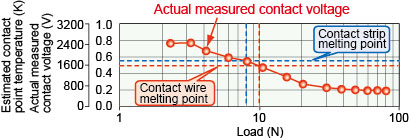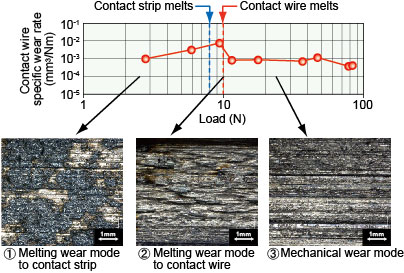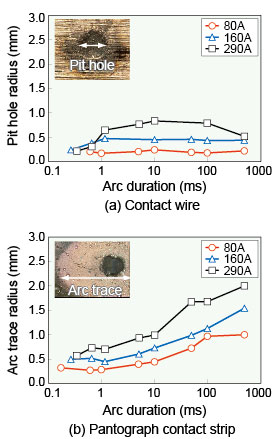4.Insights into collector material arc damage and wear modes during current collection
- The transition mechanisms of wear mode of collector material during current collection was elucidated.
- The relationship between arc duration, arc damage and current was clarified.
Information about wear and arcing damage to contact wires and pantograph contact strips is crucial for forecasting frictional wear and for product development. First therefore improved test equipment was developed for finer observation and measurement of contact condition during sliding current collection. The improved equipment can replicate actual straight sliding contact conditions with a contact wire. Maximum temperature at the point of current collection was then found by measuring voltage at the contact strip-contact wire interface (Fig.1). This test set up was used to perform current collection wear experiments. These showed that there was a marked change in friction coefficient and specific wear rate under loading conditions where the estimated maximum contact temperature reached the melting point of the current collection materials and revealed that there were three modes in wear transition (Fig 2).
Subsequently, in order to clarify the damage mechanism of the collector material under arc discharge, the state of damage of the contact wire and pantograph contact strip surface were observed while current and arc duration were controlled. The outcome highlighted that material loss on the contact wire (radius of pit hole) changed with current intensity whereas pantograph contact strip damage (arc trace radius) varied not only with the current but also with arc duration time (Fig.3). These results are destined to form the basis of further work into the clarification of current collection related wear phenomena and material development.

Fig.1 Load, contact voltage and contact temperature (100A current collection)
Fig.2 Load and contact wire specific wear rate (100A Current collection)

Fig.3 Arc damage characteristics